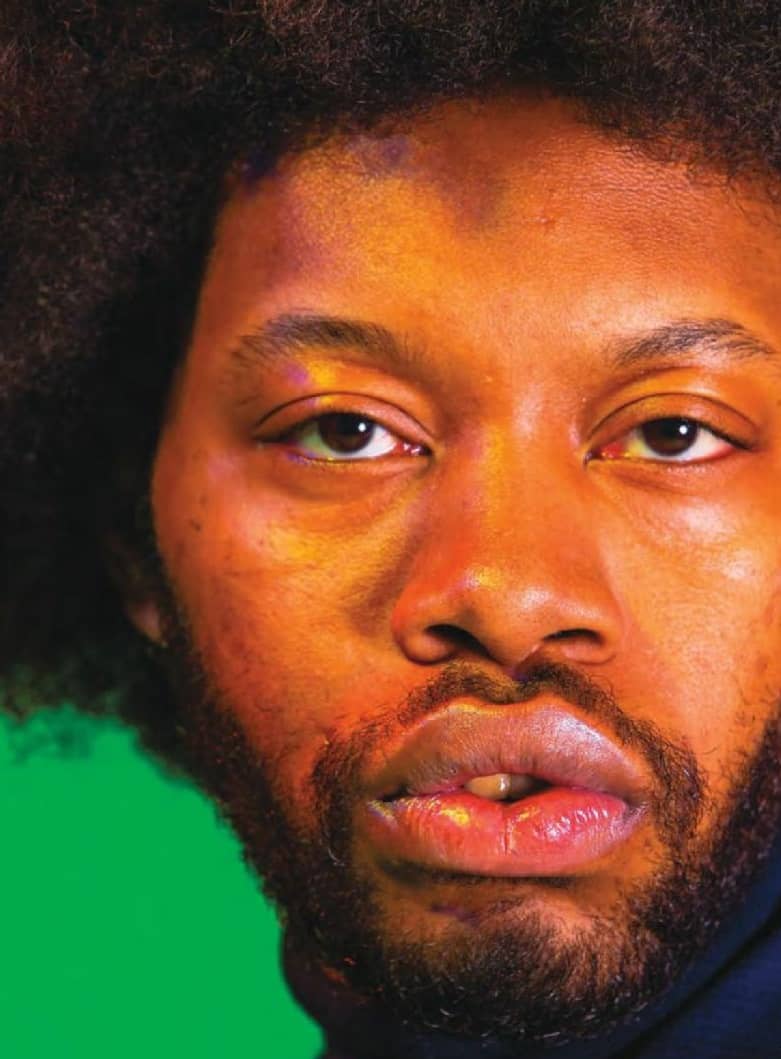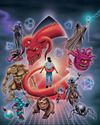Playwright. Provocateur. Grad student. A whirlwind day in the life of the author of Slave Play and Daddy.

IN THE WINTER of 2015, the playwright Jeremy O. Harris decided to write Slave Play as a bit of a dare. He was at a holiday party in Prospect Heights, where he got into a heated debate with a group of writers about “erotics, desire, and who gets to own fantasy.” One of them, a straight white guy, said he had recently enjoyed enacting a rape fantasy with a partner. Feeling his Socratic self, Harris decided to troll him. “You could rape anyone, any day,” he said. “You probably have raped someone. What does that mean that you’re owning this?” Then he took it further, asking if the guy would feel the same about rape play if his partner were black. “Everything got really tense for everyone,” Harris recalls. “I was like, Wait. Why is it tense now, but it wasn’t tense before?”
At that moment, the idea for Slave Play sprung from his brain almost fully formed. “First act, second act,” he says during a late-night car ride from New York to New Haven, where he’s a third year student in the playwriting M.F.A. program at Yale. “I’m going to write this.” Slave Play would imagine what rape play would look like for an interracial couple into antebellum costumes. The first act would begin with three interracial couples, gay and straight, enacting various sexual dominance scenarios on an AstroTurf plantation. The second would reveal that the couples are engaging in a cutting edge therapy technique utilizing “race play”—a subset of BDSM—to get the black partner reengaged sexually in the relationship, working out the master slave dialectic onstage through talk and sex. Someone said it sounded “insane,” but Harris’s friend the writer Maxwell Neely-Cohen told him it was so fucked up he would watch it even though he didn’t frequent the theater.
Denne historien er fra March 4, 2019-utgaven av New York magazine.
Start din 7-dagers gratis prøveperiode på Magzter GOLD for å få tilgang til tusenvis av utvalgte premiumhistorier og 9000+ magasiner og aviser.
Allerede abonnent ? Logg på
Denne historien er fra March 4, 2019-utgaven av New York magazine.
Start din 7-dagers gratis prøveperiode på Magzter GOLD for å få tilgang til tusenvis av utvalgte premiumhistorier og 9000+ magasiner og aviser.
Allerede abonnent? Logg på

LIFE AS A MILLENNIAL STAGE MOM
A journey into the CUTTHROAT and ADORABLE world of professional CHILD ACTORS.

THE NEXT DRUG EPIDEMIC IS BLUE RASPBERRY FLAVORED
When the Amor brothers started selling tanks of flavored nitrous oxide at their chain of head shops, they didn't realize their brand would become synonymous with the country's burgeoning addiction to gas.

Two Texans in Williamsburg
David Nuss and Sarah Martin-Nuss tried to decorate their house on their own— until they realized they needed help: Like, how do we not just go to Pottery Barn?”

ADRIEN BRODY FOUND THE PART
The Brutalist is the best, most personal work he's done since The Pianist.

Art, Basil
Manuela is a farm-to-table gallery for hungry collectors.

'Sometimes a Single Word Is Enough to Open a Door'
How George C. Wolfein collaboration with Audra McDonald-subtly, indelibly reimagined musical theater's most domineering stage mother.

Rolling the Dice on Bird Flu
Denial, resilience, déjà vu.

The Most Dangerous Game
Fifty years on, Dungeons & Dragons has only grown more popular. But it continues to be misunderstood.

88 MINUTES WITH...Andy Kim
The new senator from New Jersey has vowed to shake up the political Establishment, a difficult task in Trump's Washington.

Apex Stomps In
The $44.6 million mega-Stegosaurus goes on view (for a while) at the American Museum of Natural History.